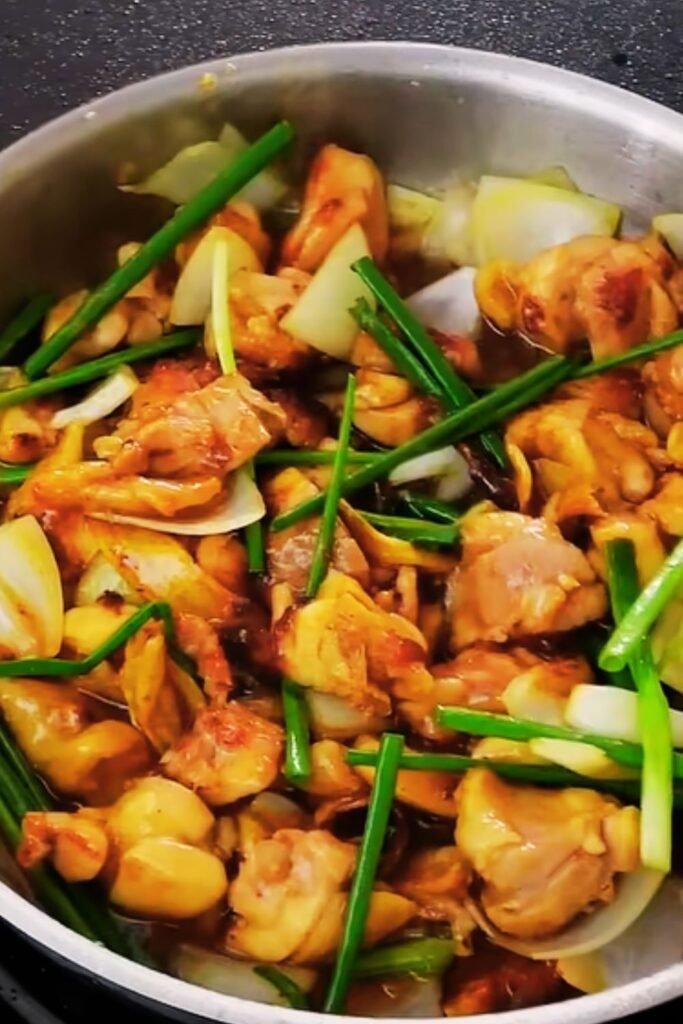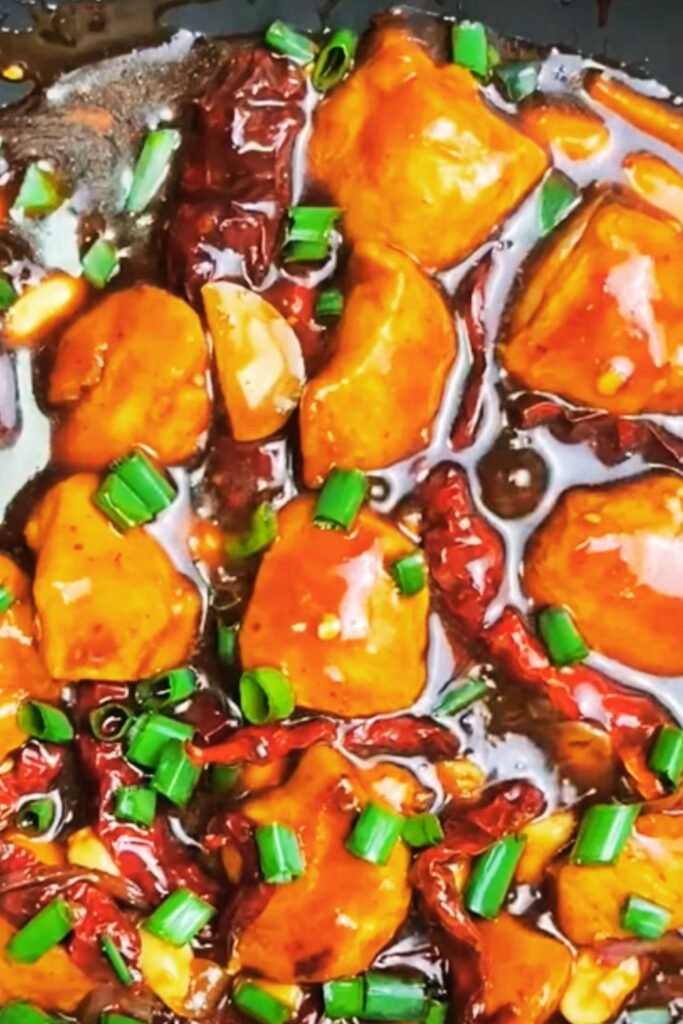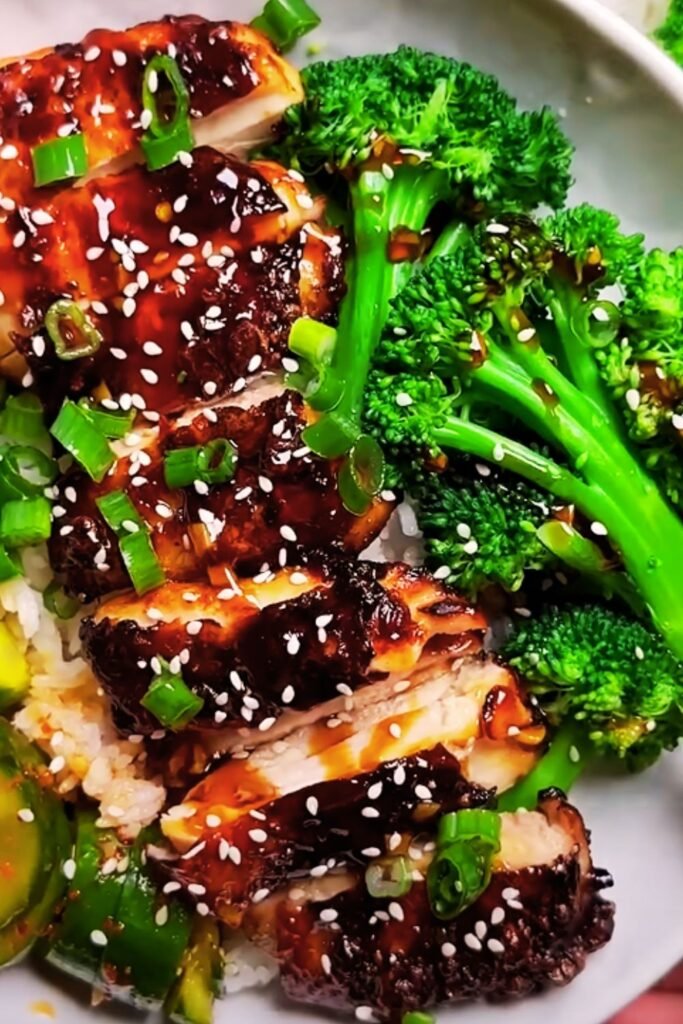There’s something magical about the sizzle of fresh ingredients hitting a hot wok, the aromatic dance of garlic and ginger filling my kitchen, and the vibrant colors of vegetables coming together in perfect harmony. I’ve been perfecting my chicken stir fry recipe for years, and I’m excited to share this foolproof method that delivers restaurant-quality results in your own home.
Stir frying represents one of the most fundamental cooking techniques in Asian cuisine, combining speed, flavor, and nutrition in a single dish. My approach focuses on achieving that coveted “wok hei” – the breath of the wok – that gives authentic stir fry its distinctive smoky flavor and perfectly crisp-tender vegetables.
Understanding the Art of Stir Frying
Stir Frying: A high-heat cooking method that involves rapidly moving ingredients in a wok or large skillet, cooking them quickly while maintaining their texture and nutritional value.
Wok Hei: The elusive smoky flavor that comes from cooking at extremely high temperatures in a well-seasoned wok, literally translating to “breath of the wok.”
Mise en Place: The French culinary term meaning “everything in its place” – absolutely crucial for successful stir frying since the cooking process happens so quickly.
Velveting: A Chinese technique of marinating thinly sliced meat in cornstarch and egg white to create incredibly tender results.
The beauty of chicken stir fry lies in its versatility and speed. I can have a complete, nutritious meal on the table in under 20 minutes, making it my go-to solution for busy weeknights when I want something satisfying without spending hours in the kitchen.
Essential Ingredients for Perfect Chicken Stir Fry
My ingredient selection focuses on creating layers of flavor while maintaining the dish’s quick-cooking nature. I always start with the highest quality chicken I can find, preferably organic, free-range breast meat that I slice against the grain for maximum tenderness.
Protein Components
| Ingredient | Quantity | Purpose | Selection Tips |
|---|---|---|---|
| Chicken Breast | 1 pound | Main protein | Choose firm, pink meat without dark spots |
| Egg White | 1 large | Velveting agent | Room temperature works best |
| Cornstarch | 2 tablespoons | Coating for tenderness | Fine powder, no lumps |
| Soy Sauce | 1 tablespoon | Initial seasoning | Low-sodium preferred |
Vegetable Selection

I believe the vegetable combination makes or breaks a stir fry. My preferred mix includes:
- Bell Peppers (2 medium): I use a combination of red, yellow, and green for visual appeal and varying sweetness levels
- Broccoli Florets (2 cups): Cut into uniform bite-sized pieces for even cooking
- Snap Peas (1 cup): These add wonderful crunch and bright green color
- Carrots (2 medium): Julienned thin for quick cooking and natural sweetness
- Mushrooms (8 oz): I prefer shiitake for their meaty texture and umami flavor
- Bean Sprouts (1 cup): Added at the very end to maintain their crisp texture
Aromatic Foundation
| Ingredient | Quantity | Purpose | Preparation Method |
|---|---|---|---|
| Fresh Ginger | 2 inches | Aromatic base | Minced finely |
| Garlic | 4 cloves | Flavor foundation | Minced or thinly sliced |
| Green Onions | 4 stalks | Fresh finish | White and green parts separated |
| Sesame Oil | 1 teaspoon | Nutty aroma | Added at the end |
The Perfect Stir Fry Sauce
My sauce recipe balances sweet, salty, and umami flavors without overwhelming the natural taste of the ingredients. I always prepare this completely before I start cooking since there’s no time to mix it once the stir frying begins.
Master Sauce Recipe
| Component | Quantity | Flavor Profile | Quality Indicators |
|---|---|---|---|
| Soy Sauce | 3 tablespoons | Salty, umami | Dark color, not too thick |
| Oyster Sauce | 2 tablespoons | Sweet, rich | Glossy consistency |
| Rice Wine | 1 tablespoon | Subtle sweetness | Clear, aromatic |
| Chicken Broth | 2 tablespoons | Depth, richness | Low-sodium preferred |
| Cornstarch | 1 teaspoon | Thickening agent | Completely dissolved |
| Sugar | 1 teaspoon | Balance acidity | White granulated |
| White Pepper | 1/4 teaspoon | Mild heat | Freshly ground |
I whisk all these ingredients together until the cornstarch completely dissolves, creating a smooth mixture that will coat the ingredients beautifully when added to the hot wok.
Step-by-Step Cooking Method

My technique follows traditional Chinese stir fry principles, emphasizing high heat, constant movement, and proper timing.
Preparation Phase
- Slice the chicken: I cut the breast meat against the grain into thin strips, approximately 1/4 inch thick and 2 inches long
- Marinate the chicken: Combine sliced chicken with egg white, cornstarch, and soy sauce, mixing gently until well coated
- Prepare vegetables: Cut all vegetables into uniform sizes for even cooking
- Mix the sauce: Combine all sauce ingredients and set aside
- Heat the wok: This is crucial – I heat my wok over high heat until it’s smoking hot
Cooking Sequence
First Stage – Protein Cooking
- Add 1 tablespoon of neutral oil to the hot wok
- Add marinated chicken in a single layer
- Let it sear undisturbed for 60 seconds
- Stir fry for 2-3 minutes until nearly cooked through
- Remove chicken and set aside
Second Stage – Aromatics
- Add another teaspoon of oil if needed
- Add minced ginger and garlic
- Stir constantly for 15 seconds until fragrant
Third Stage – Vegetables
- Add hardest vegetables first (carrots, broccoli stems)
- Stir fry for 1 minute
- Add medium-cooking vegetables (bell peppers, broccoli florets)
- Continue stir frying for 2 minutes
- Add quick-cooking vegetables (snap peas, mushrooms)
Final Stage – Assembly
- Return chicken to the wok
- Add the prepared sauce
- Stir everything together for 1-2 minutes
- Add bean sprouts and green onion whites
- Remove from heat and drizzle with sesame oil
- Garnish with green onion tops
Advanced Techniques for Superior Results
Temperature Control Mastery
I’ve learned that maintaining proper heat throughout the cooking process is absolutely critical. The wok should be hot enough that a drop of water sizzles and evaporates immediately. If the temperature drops too much when adding ingredients, I increase the heat momentarily to bring it back up.
Timing and Texture Management
| Vegetable Type | Cooking Time | Texture Goal | Heat Level |
|---|---|---|---|
| Root Vegetables | 2-3 minutes | Tender-crisp | High |
| Cruciferous | 2-3 minutes | Bright, firm | High |
| Soft Vegetables | 1-2 minutes | Just heated | Medium-high |
| Leafy Greens | 30 seconds | Wilted, vibrant | High |
Oil Selection and Usage
I use peanut oil for its high smoke point and neutral flavor, though avocado oil works excellently too. The key is using just enough oil to prevent sticking while allowing the ingredients to make direct contact with the hot metal surface.
Nutritional Benefits and Health Considerations

This chicken stir fry provides exceptional nutritional value, combining lean protein with a rainbow of vegetables that deliver essential vitamins, minerals, and antioxidants.
Complete Nutritional Breakdown
| Component | Per Serving | % Daily Value | Health Benefits |
|---|---|---|---|
| Calories | 285 | 14% | Moderate calorie density |
| Protein | 28g | 56% | Complete amino acid profile |
| Carbohydrates | 18g | 6% | Complex carbs from vegetables |
| Fiber | 4g | 16% | Digestive health support |
| Vitamin C | 95mg | 106% | Immune system boost |
| Vitamin A | 180% DV | 180% | Eye and skin health |
| Iron | 2.5mg | 14% | Oxygen transport |
| Calcium | 85mg | 8% | Bone health |
The cooking method preserves most of the vegetables’ water-soluble vitamins, particularly vitamin C and B-complex vitamins, which can be lost through longer cooking methods. The quick, high-heat cooking also maintains the vegetables’ fiber content and natural enzymes.
Customization Options and Variations
Protein Alternatives
While I love the classic chicken version, I frequently experiment with different proteins to keep meals interesting:
- Beef Stir Fry: Use flank steak or sirloin, sliced thin against the grain
- Pork Variation: Pork tenderloin works beautifully with the same marinade
- Shrimp Version: Reduce cooking time significantly – just 2-3 minutes total
- Tofu Option: Use extra-firm tofu, pressed and cubed, for vegetarian meals
Seasonal Vegetable Adaptations
| Season | Featured Vegetables | Flavor Profile | Cooking Adjustments |
|---|---|---|---|
| Spring | Asparagus, peas, baby corn | Fresh, delicate | Reduce cooking time |
| Summer | Zucchini, yellow squash | Light, refreshing | Add at very end |
| Fall | Brussels sprouts, cauliflower | Hearty, substantial | Pre-blanch dense vegetables |
| Winter | Cabbage, root vegetables | Warming, satisfying | Increase cooking time |
Spice Level Modifications
For those who enjoy heat, I recommend these additions:
- Fresh sliced chilies added with the aromatics
- Chili oil drizzled before serving
- Sriracha mixed into the sauce
- Crushed red pepper flakes sprinkled throughout
Common Mistakes and Solutions
Overcrowding the Pan
This is the most frequent error I see home cooks make. When too many ingredients are added at once, the temperature drops dramatically, causing vegetables to steam rather than stir fry. I always cook in batches if necessary, keeping portions small enough that ingredients can move freely.
Inadequate Preparation
Stir frying happens so quickly that there’s no time to chop vegetables or mix sauces once cooking begins. I spend more time preparing than cooking – everything must be ready before the wok heats up.
Sauce Timing Issues
Adding sauce too early can cause it to burn and become bitter. I wait until the very end of cooking, then add the sauce and immediately toss everything together, allowing the cornstarch to thicken without overcooking.
Serving Suggestions and Accompaniments
I serve my chicken stir fry over steamed jasmine rice, which perfectly absorbs the flavorful sauce. Brown rice provides more fiber and nutrients, while cauliflower rice offers a low-carb alternative.
Traditional Pairings
- Steamed white rice: The classic choice that never fails
- Brown rice: Nuttier flavor and additional fiber
- Quinoa: Higher protein content and complete amino acids
- Rice noodles: Creates a more substantial, noodle-dish feel
Side Dish Recommendations
- Hot and sour soup to start the meal
- Steamed dumplings for a more substantial feast
- Fresh cucumber salad for cooling contrast
- Pickled vegetables for acidic balance
Storage and Meal Prep Tips
Leftover stir fry keeps well in the refrigerator for up to three days, though the vegetables will lose some of their crisp texture. I often prepare extra vegetables and sauce on Sunday for quick weeknight meals.
Freezer Storage Guidelines
| Component | Freezer Life | Thawing Method | Quality Notes |
|---|---|---|---|
| Cooked Stir Fry | 2-3 months | Overnight in fridge | Vegetables soften slightly |
| Prepped Vegetables | 6 months | Use from frozen | Maintain better texture |
| Marinated Chicken | 3 months | Overnight thawing | Excellent quality retained |
| Prepared Sauce | 6 months | Room temperature | Whisk before using |
Frequently Asked Questions
Q: Can I make this stir fry without a wok? A large, heavy-bottomed skillet works perfectly fine for home cooking. I actually prefer a 12-inch stainless steel or cast iron pan for most home stove tops since they provide better heat distribution than many home woks.
Q: How do I prevent my chicken from becoming tough? The velveting technique with egg white and cornstarch is crucial, but equally important is not overcooking. I remove the chicken when it’s just barely cooked through since it will finish cooking when returned to the pan with the sauce.
Q: Why do my vegetables turn out mushy? This usually happens when the heat is too low or the vegetables are overcooked. I keep the heat high throughout cooking and add vegetables in order of cooking time needed, starting with the densest ones first.
Q: Can I prepare the sauce in advance? Absolutely! I often make double batches of sauce and store it in the refrigerator for up to a week. Just give it a good stir before using since the cornstarch may settle.
Q: What’s the best oil for stir frying? I prefer peanut oil for its high smoke point and neutral flavor, but avocado oil, grapeseed oil, or even vegetable oil work well. Avoid olive oil as it has a lower smoke point and can become bitter at high temperatures.
Q: How can I make this dish spicier? My favorite method is adding sliced fresh chilies with the garlic and ginger, or mixing chili garlic sauce into the stir fry sauce. You can also drizzle chili oil over the finished dish.
Q: Is it possible to make this ahead for meal prep? While stir fry is best fresh, I often prep all the ingredients on Sunday and store them separately. The actual cooking takes less than 10 minutes, making it perfect for quick weeknight meals.
Q: Can I use frozen vegetables? Fresh vegetables definitely provide the best texture, but frozen can work in a pinch. I thaw them completely and pat dry before cooking, and I reduce the cooking time since they’re already partially cooked.
Q: What’s the secret to getting restaurant-style flavor at home? The key is extremely high heat, proper timing, and not overcrowding the pan. I also use a combination of soy sauce and oyster sauce for depth, and finish with sesame oil for that authentic aroma.
Q: How do I know when the chicken is properly cooked? The chicken should be opaque throughout with no pink areas, and it should feel firm to the touch. Since the pieces are thin, this usually takes just 3-4 minutes of active cooking time.
This chicken stir fry recipe has become my reliable weeknight solution, delivering complex flavors and perfect textures every single time. The technique might seem demanding at first, but once you master the timing and heat control, you’ll find yourself creating restaurant-quality meals in your own kitchen with confidence and ease.